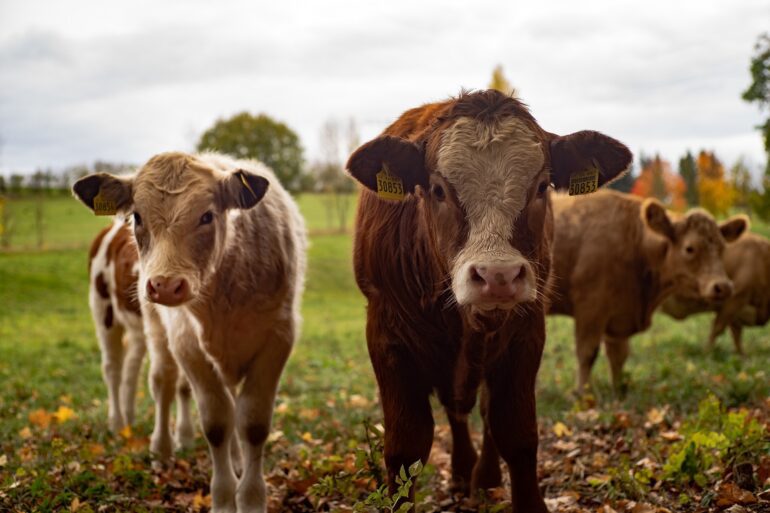TL;DR:
- Precision technologies and machine learning enable early diagnosis of calf-killing bovine respiratory disease.
- Collaboration among researchers from Penn State, the University of Kentucky, and the University of Vermont drives innovation in dairy farming.
- Affordable technology offers dairy producers the opportunity to detect and intervene in animal health problems at an early stage.
- IoT devices, such as wearable sensors and automatic feeders, closely monitor calf behavior and generate valuable data.
- Machine learning algorithms analyze the data to distinguish between sick and healthy calves.
- The proposed approach achieved an accuracy rate of 88% in labeling sick and healthy calves.
- Behavioral changes in calves can be identified before clinical signs of bovine respiratory disease manifest.
- Early detection of the disease saves calves and protects the significant investments made by dairy producers.
Main AI News:
Precision technology and machine learning have revolutionized the dairy farming industry by enabling early diagnosis of calf-killing bovine respiratory disease, according to a groundbreaking study. A collaborative effort by esteemed researchers from Penn State, the University of Kentucky, and the University of Vermont has paved the way for dairy producers to enhance the viability of their farms through this novel approach.
The traditional methods of dairy farming are undergoing a remarkable transformation, as emphasized by lead researcher Melissa Cantor, assistant professor of precision dairy science at Penn State’s College of Agricultural Sciences. Cantor highlights the increasing affordability of new technologies that offer farmers unprecedented opportunities to detect animal health issues at an early stage. This early intervention not only saves the lives of calves but also safeguards the substantial investments they represent.
The study relies on precision technologies based on the “Internet of things” (IoT), a network of interconnected devices equipped with sensors, software, and communication abilities. Wearable sensors and automatic feeders, among other IoT technologies, were employed to closely monitor and analyze the condition of calves. These IoT devices generate copious amounts of data, which, to aid interpretation and provide insights into calf health problems, were subjected to machine learning algorithms. Machine learning, a branch of artificial intelligence, discerns hidden patterns in data and effectively distinguishes between sick and healthy calves based on input from IoT devices.
As Cantor explains, “We put leg bands on the calves, which record activity behavior data in dairy cattle, such as the number of steps and lying time. And we used automatic feeders, which dispense milk and grain and record feeding behaviors, such as the number of visits and liters of consumed milk. Information from those sources signaled when a calf’s condition was on the verge of deteriorating.”
Bovine respiratory disease, the primary cause of antimicrobial use in dairy calves, accounts for a staggering 22% of calf mortalities. The economic repercussions and detrimental effects of this ailment on farms are substantial, as rearing dairy calves represents a significant investment. Cantor stresses the challenges associated with diagnosing bovine respiratory disease, which necessitates intensive and specialized labor. However, IoT devices integrated with precision technologies, including automatic feeders, scales, and accelerometers, hold great potential in detecting behavioral changes indicative of the disease before clinical signs become evident.
In the study, data was meticulously collected from 159 dairy calves using precision livestock technologies, alongside daily physical health exams conducted by the researchers at the University of Kentucky. Both automatic and manual data collection methods were employed, and the results were meticulously compared. The findings, recently published in IEEE Access, a reputable peer-reviewed open-access scientific journal by the Institute of Electrical and Electronics Engineers, highlight the success of the proposed approach in identifying calves that developed bovine respiratory disease at an earlier stage. Impressively, the system achieved an 88% accuracy rate in labeling sick and healthy calves. Furthermore, 70% of sick calves were predicted four days prior to diagnosis, and 80% of calves with chronic cases were detected within the initial five days of illness.
“We were really surprised to find out that the relationship with the behavioral changes in those animals was very different than animals that got better with one treatment,” Cantor reveals. “And nobody had ever looked at that before. We came up with the concept that if these animals actually behave differently, then there’s probably a chance that IoT technologies empowered with machine learning inference techniques could actually identify them sooner, before anybody can with the naked eye. That offers producers options.”
Conclusion:
The integration of precision technology and machine learning in the dairy farming industry has tremendous implications for the market. The early diagnosis of calf-killing bovine respiratory disease allows dairy producers to take timely action, minimizing economic losses and ensuring the well-being of their calves. This breakthrough offers a transformative solution that not only enhances the viability of farms but also paves the way for advancements in animal health management. As precision technologies become more accessible and affordable, the market can expect a shift towards proactive and data-driven approaches, revolutionizing the future of dairy farming.

